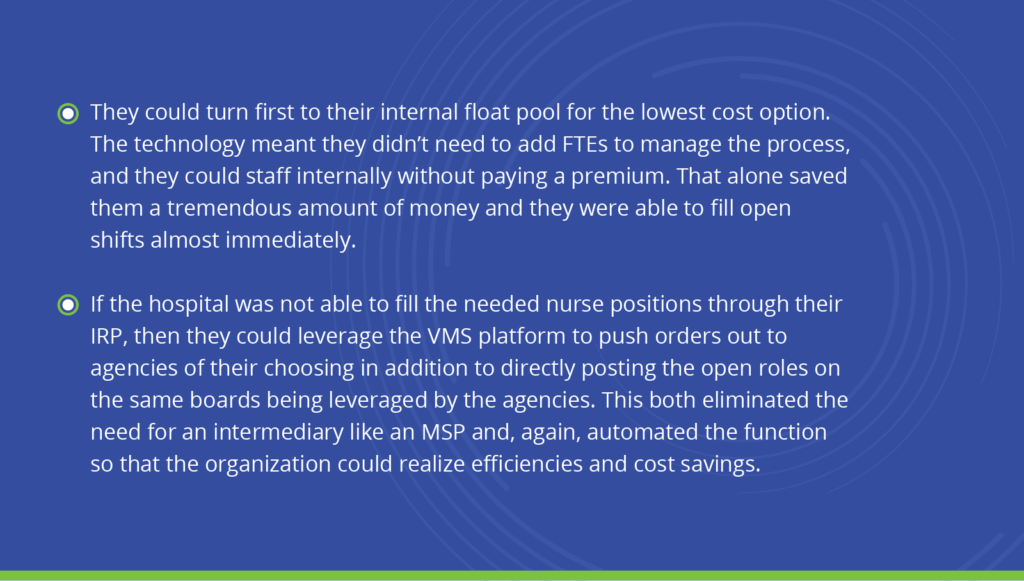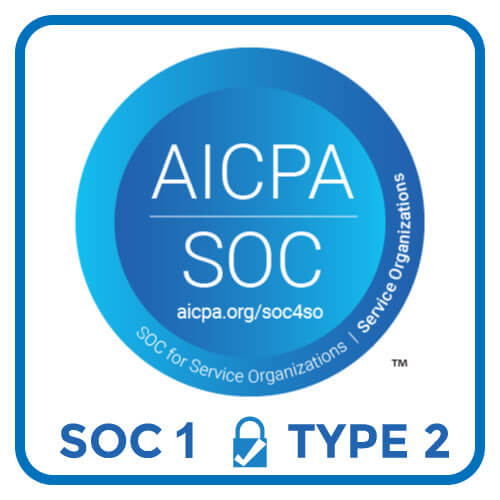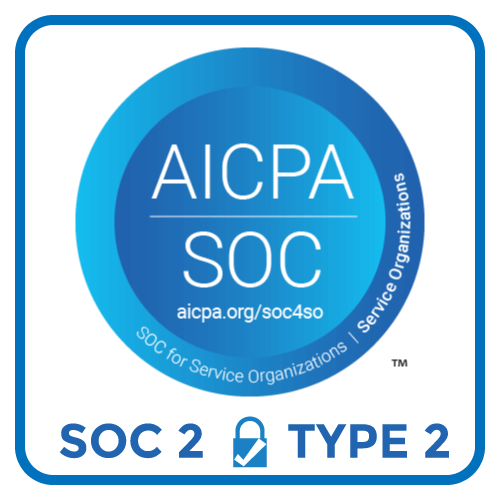Hospitals and health systems alike struggle with the inefficiencies and high costs related to sourcing contingent and contract nursing staff. To solve this problem, organizations must first exhaust all possible internal resources through their nurse float pool before resorting to premium labor. Then, for what contract labor remains, the organization must be able to control procurement without sacrificing oversight of bill rates or when open roles are posted.
Unfortunately, that’s not how it works at most hospitals.
Imagine you have an open role that you need to fill with a temporary nurse. You do typically have a variety of options, but none of them are ideal:
- You could go through a Managed Staffing Provider (MSP); but you will pay a significant premium, lose control and it will take them time to fill that role.
- You could pay members of your core full- or part-time staff overtime or some form of incentive pay, but that’s also expensive and increases the risk of burnout and dissatisfaction among core staff.
- You could turn to your internal resource pool, but if it’s not powered by the right technology platform, you won’t have the automated communication and workflows in place to attract and deploy enough nurses.
The key is to take control of the workforce management staffing process from start to finish, and the only way to do that is by managing the entire contingent workforce from a single platform that offers both Internal Resource Pool (IRP) and Vendor Management System (VMS) functionality.
1: You need the right float pool technology to successfully engage that pool of nurses.

Managing an internal resource pool (IRP) of contingent nurses can be prohibitively difficult. This is a very specific workforce segment that is unlike your core full- or part-time staff. These nurses are “app-enabled,” tech-forward, and prioritize control and convenience. They want to be able to pick and choose shifts on their own terms, in their own time, and on their own devices. If the hospital doesn’t offer them those abilities, they’re not interested.
The right IRP technology can reach these nurses where they want to be contacted and offer them the scheduling flexibility and enough control over their own shifts to attract them to participate in the IRP program. As a result, the organization can grow its float pool and make it more attractive, accessible, and easier for nurses from that pool to access and fill open roles.
2: Insource staffing vendor management instead of going through MSPs.
Establishing a robust IRP program is only part of the solution to controlling costs and getting on a path to long-term success. The natural next step is for the hospital to manage its own external labor. In fact, this is the only way to maximize the IRP’s productivity.
Contrary to what many hospitals think, they don’t need an MSP to manage contract labor. It doesn’t even make sense if the goal is to control costs. The MSP has its own goals that often don’t align with those of the hospital That disconnect can result in excessive labor spend with little-to-no transparency into why the hospital is paying a particular rate, whether it’s possible to achieve quicker fill times, and if they could increase their fill rate. Basically, the hospital has no direct control over the labor situation because the MSP controls everything.
The good news: anything an MSP can do, hospitals can do better, if they have an insourced Vendor Management System (VMS) solution powered by the right technology.
What makes deploying both an insourced IRP and VMS in tandem so effective?
That’s the question one Michigan-based health system asked itself after facing a $6 million annual labor spend with no insight into how to bring down costs, even after trying to work through the issue with their MSP.
By deploying both IRP and VMS technology in tandem, they could immediately leverage lower cost labor options for both the internal and external resources. Whenever a new role opened:
- They could turn first to their internal float pool for the lowest cost option. The technology meant they didn’t need to add FTEs to manage the process, and they could staff internally without paying a premium. That alone saved them a tremendous amount of money and they were able to fill open shifts almost immediately.
- If the hospital was not able to fill the needed nurse positions through their IRP, then they could leverage the VMS platform to push orders out to agencies of their choosing in addition to directly posting the open roles on the same boards being leveraged by the agencies. This both eliminated the need for an intermediary like an MSP and, again, automated the function so that the organization could realize efficiencies and cost savings.

For this health system, this IRP/VMS combined approach immediately reduced bill rates by 25% – approximately $1.5 million in immediate annual labor savings. In addition, the organization’s time to fill was reduced three-fold, with some openings being filled almost immediately.
And when asked about implementation of the combined solution, the MI-based health system’s nurse manager said “The technology piece was one of the easiest parts of the change. The system is a very open-ended, seamless form of software that catered to exactly what we needed.”
Altogether, hospitals and health systems will not realize the full potential labor cost or efficiency savings unless they have both an IRP and VMS in place. Implementing only one or the other will help but limit the potential benefits and efficiency gains. Only when both pieces are in place can organizations realize optimal results.
For more information about pairing an IRP with a VMS to power a total contingent workforce management solution, see our white paper “Solve the Puzzle: The 3 Keys to Cost-Efficient, Long-Term Nurse Labor Sourcing.”












